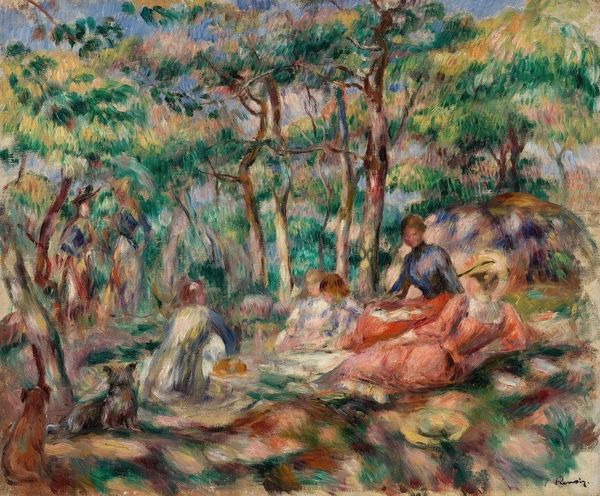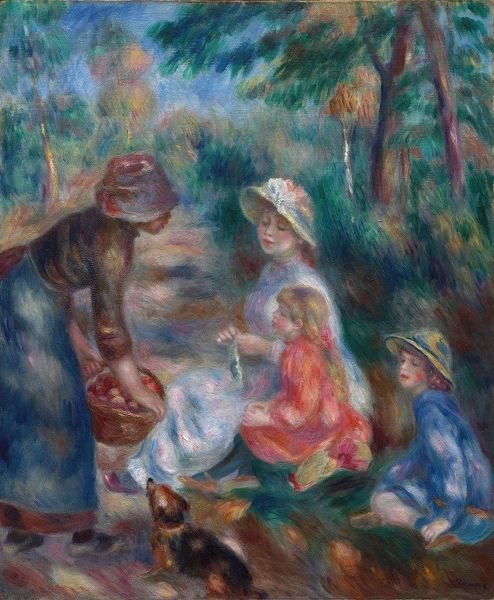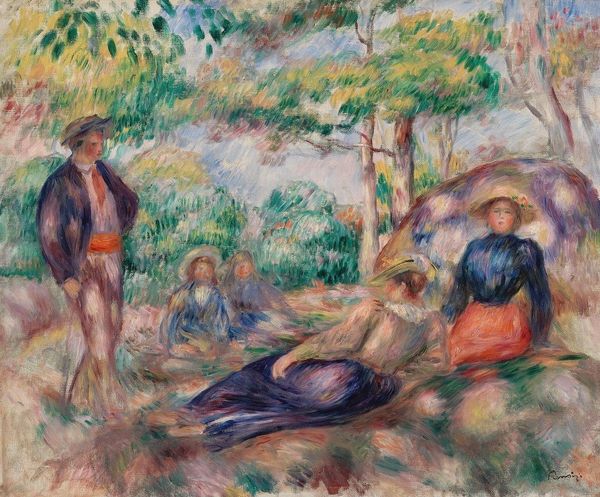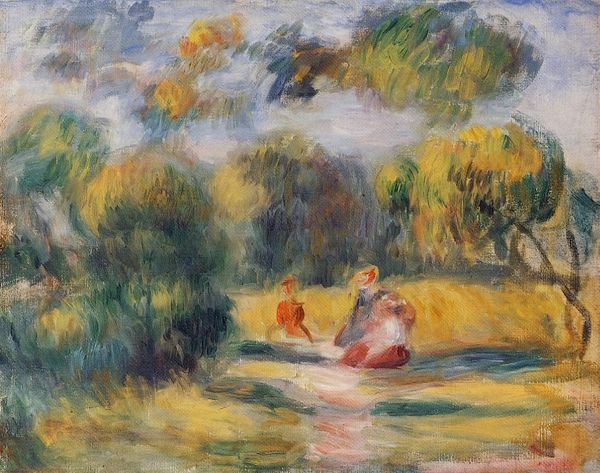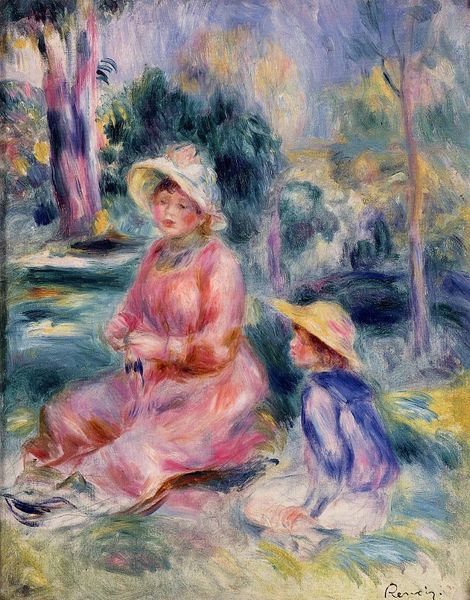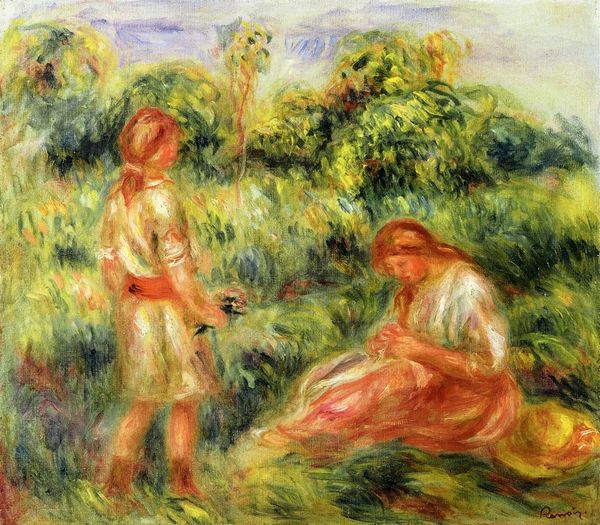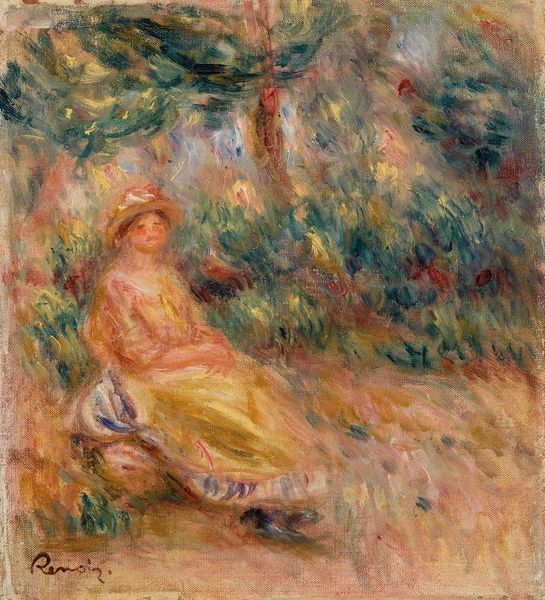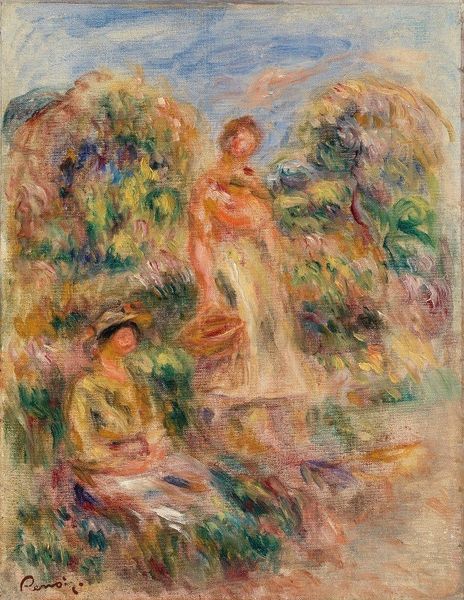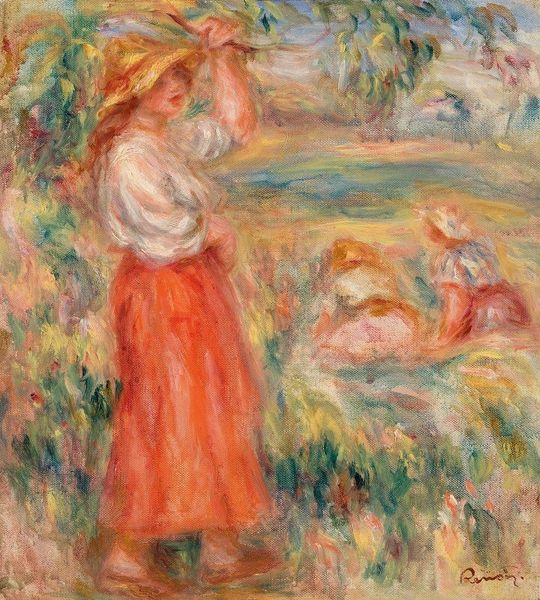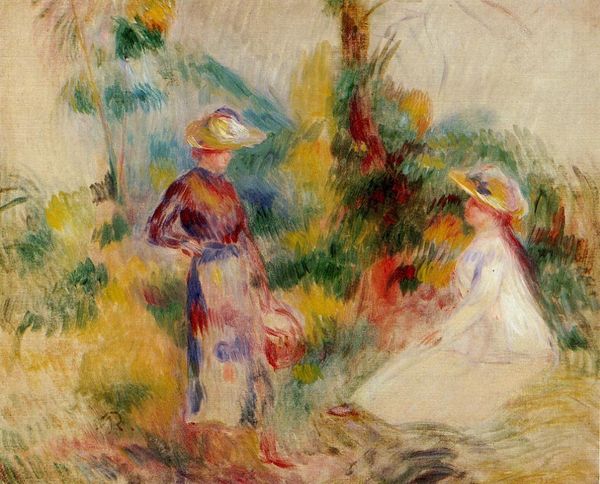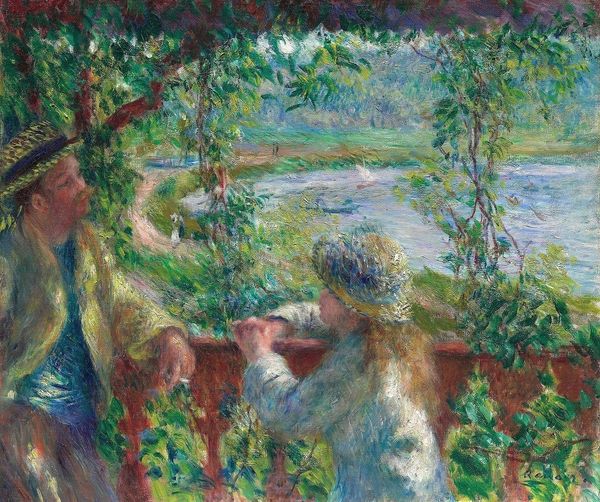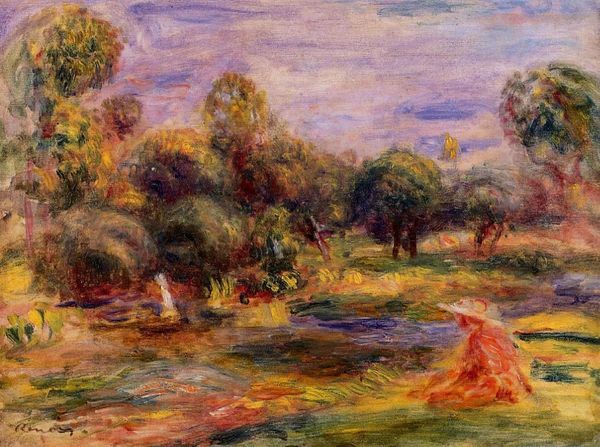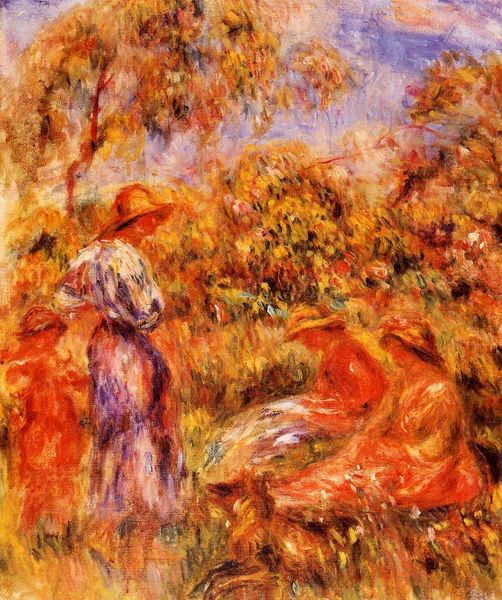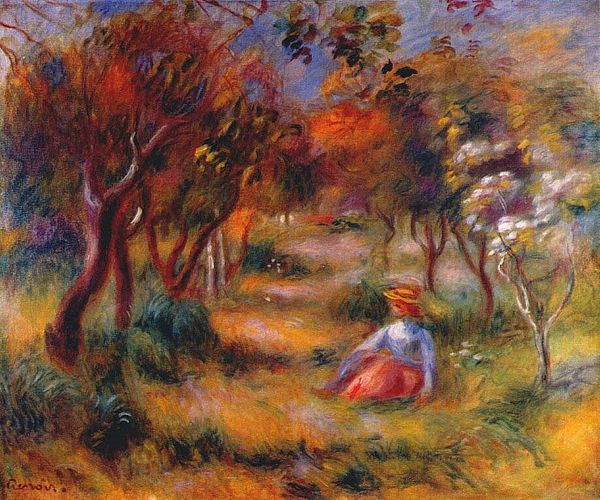
Copyright: Public domain
Editor: Here we have Pierre-Auguste Renoir's "Three Young Girls Sitting in the Grass," created in 1897, using oil paints, in a Plein-air setting. I find the overall composition quite dreamlike and idyllic. What do you see in this piece? Curator: I see a powerful representation of leisure and female identity within the constraints of 19th-century bourgeois society. Renoir often painted women in domestic or recreational settings. It's important to consider how these depictions, while seemingly innocent, can be interpreted through a feminist lens. Editor: A feminist lens? How so? Curator: Well, who gets to relax in nature and who doesn't, right? Who has access and who is being exploited? Consider who *isn't* represented here, too. Were these women able to enjoy this scene without the support of other unacknowledged people? How does their leisure relate to the labor of others? Editor: That's an interesting perspective. I hadn’t thought about the unacknowledged labor aspect. The painting feels so light and carefree. Curator: Exactly! It’s crucial to look beyond the surface and examine the power dynamics at play. Even in ostensibly innocent scenes, class and social structures dictate who can experience leisure and in what manner. What might a contemporary artist do with a similar image, using the same setting, but highlighting those imbalances of power and wealth? Editor: That's such a good question. Perhaps an installation piece contrasting this idyllic scene with the realities of labor. Curator: Precisely. That dialogue between historical context and contemporary interpretation is where art truly resonates. Editor: I will definitely view these scenes through this more intersectional lens moving forward. Thank you.
Comments
No comments
Be the first to comment and join the conversation on the ultimate creative platform.
